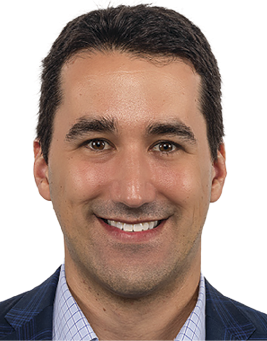- Acne
- Actinic Keratosis
- Aesthetics
- Alopecia
- Atopic Dermatitis
- Buy-and-Bill
- COVID-19
- Case-Based Roundtable
- Chronic Hand Eczema
- Chronic Spontaneous Urticaria
- Drug Watch
- Eczema
- General Dermatology
- Hidradenitis Suppurativa
- Melasma
- NP and PA
- Pediatric Dermatology
- Pigmentary Disorders
- Practice Management
- Precision Medicine and Biologics
- Prurigo Nodularis
- Psoriasis
- Psoriatic Arthritis
- Rare Disease
- Rosacea
- Skin Cancer
- Vitiligo
- Wound Care
Publication
Article
Dermatology Times
Residency Is Ending Soon: Key Financial Tips for Your Next Chapter
From a financial perspective, the change from resident to attending dermatologist may be profound.
Image credit: © fizkes - stock.adobe.com

The end of residency marks an important career milestone for young dermatologists. Completing medical and specialty training is an accomplishment to take pride in, as countless hours—not to mention blood, sweat, and tears—have gone into it. From a clinical perspective, a young dermatologist can now go it alone, treating patients without anyone looking over their shoulder or checking their work.
From a financial perspective, the change from resident to attending dermatologist may be even more profound. Moving from the meager salary of a resident to the compensation of a fully fledged dermatologist is a significant step up. Despite the exhilaration triggered by a larger paycheck, however, the financial concerns of a young practicing dermatologist may be more daunting than those of a nearly broke resident.
In this article, we address a few of the common financial concerns that young practicing dermatologists face and provide critical tips for navigating them successfully.
1: Pay Off Student Loans Quickly…or Not
Addressing student loans early on is a crucial element in financial planning for dermatologists beginning to practice. Effective strategies for paying off student loans can include consolidation and refinancing, and physicians should understand the impact of interest rates and repayment plans to make informed decisions about their financial future.
Consolidating or refinancing student loans can simplify repayment and potentially lower interest rates. However, it is important to weigh the benefits against potential drawbacks, such as losing certain loan forgiveness options or extending the repayment period.
To optimize their loan repayment strategy, physicians also can explore different repayment plans, such as income-driven repayment or refinancing with a lower interest rate. Further, as they consider other financial goals, such as saving for a home down payment or beginning retirement savings (per below), many young dermatologists must balance aggressively paying down student loans with these new aspirations.
Key tip: Because there is rarely a clear “right” balance, working with a financial adviser experienced in working with young physicians is often helpful, as they can give insights into how other similarly situated clients have dealt with this issue.
2: Establish an Emergency Fund
One piece of financial advice that likely applies to most young dermatologists is to establish and maintain an emergency fund. Aim to save 3 to 6 months’ worth of living expenses in a high-yield savings account that allows easy access in times of need. Automatic monthly transfers into the emergency account can replenish the fund quickly after withdrawals.
Key tip: An emergency fund provides a “safety net” for young physicians so that unforeseen expenses do not sidetrack their long-term financial goals.
3: Maximize Retirement Account Benefits
Keeping in mind the tension between this goal and paying down student loans more quickly, maximizing contributions to employer-sponsored retirement plans, such as a 401(k) or 403(b) plan, offers several advantages:
- Physicians can harness the power of compound growth by beginning these contributions early in their careers.
- Employers often provide matching contributions, which essentially combines “free money” with the physician’s contribution amounts to grow over time.
- Retirement plan contributions are tax deferred, meaning physicians can lower their taxable income while saving for retirement.
Key tip: When investing in retirement accounts, physicians should consider their risk tolerance and time horizon. An experienced financial adviser can help a young investor diversify investments across different asset classes to mitigate risk and regularly review and adjust investment allocations as financial goals and market conditions change.
4: Budget With Your Lifestyle in Mind
Understanding cash flow and effective budgeting is fundamental to financial success.
Managing cash flow can be challenging for beginning dermatologists, especially as they transition from the income earned in residency to the higher salaries and bonuses often enjoyed by practicing physicians. By tracking income and fixed and variable expenses, physicians can better manage their cash flow and ensure they have enough money to cover their financial obligations, enjoy personal lifestyle goals, and contribute to emergency funds and retirement accounts.
One popular budgeting strategy is the 50/30/20 rule, which suggests allocating 50% of income to essential expenses like housing, utilities, and groceries; 30% to discretionary expenses like dining out and entertainment; and 20% to savings and debt repayment. Of course, physicians may need to adjust this guideline based on their individual circumstances and financial objectives.
Key tip: Financial tools and apps, such as Mint, YNAB (You Need a Budget), and Empower, can aid physicians in budgeting, tracking expenses, and setting financial goals. These tools can provide a comprehensive overview of finances, help identify areas for improvement, and automate savings contributions.
5: Secure Disability and Life Insurance
Insurance provides essential financial protection as physicians build assets and take on more personal and professional obligations. Many young dermatologists may not realize that one of their most significant assets to protect is the value of their future income, which may be a multimillion-dollar asset in present value terms.
Physicians should secure disability insurance at the outset of their career to protect the value of their future income from the risk of a short- or long-term disability. Because dermatologists often find that the group disability insurance their employer provides does not fully meet their needs, they may consider purchasing individual disability insurance to ensure comprehensive protection against income loss due to illness or injury.
Life insurance is an essential consideration for physicians when they have a spouse, children, or others dependent on their incomes. After determining the amount of life insurance they need, physicians can choose between term life and various permanent life insurance products, each with their advantages and drawbacks.
Key tip: Disability and life insurance are essential tools for physicians to protect the value of their future income for themselves and their dependents.
Conclusion
Financial planning is a critical aspect of a dermatologist’s early career and can be easily underestimated. A professional financial adviser who specializes in working with young physicians can be a valuable resource to help you establish a solid financial foundation.
David B. Mandell, JD, MBA, is an attorney and author of more than a dozen books for doctors, including Wealth Planning for the Modern Physician. He is a partner in the wealth management firm OJM Group (www.ojmgroup.com).
Adam Braunscheidel, CFP, is a partner and wealth adviser.
They can be reached at 877-656-4362 or mandell@ojmgroup.com.
Disclosure
OJM Group, LLC (“OJM”) is an SEC registered investment adviser with its principal place of practice in the State of Ohio. SEC registration does not constitute an endorsement of OJM by the SEC nor does it indicate that OJM has attained a particular level of skill or ability. OJM and its representatives are in compliance with the current notice filing and registration requirements imposed upon registered investment advisers by those states in which OJM maintains clients. OJM may only transact practice in those states in which it is registered or qualifies for an exemption or exclusion from registration requirements. For information pertaining to the registration status of OJM, please contact OJM or refer to the Investment Adviser Public Disclosure website www.adviserinfo.sec.gov.
For additional information about OJM, including fees and services, send for our disclosure brochure as set forth on Form ADV using the contact information herein. Please read the disclosure statement carefully before you invest or send money.
This article contains general information that is not suitable for everyone. The information contained herein should not be construed as personalized legal or tax advice, or as a recommendation of any particular security or strategy. There is no guarantee that the views and opinions expressed in this article will be appropriate for your particular circumstances. Tax law changes frequently; accordingly information presented herein is subject to change without notice. You should seek professional tax and legal advice before implementing any strategy discussed herein.

Newsletter
Like what you’re reading? Subscribe to Dermatology Times for weekly updates on therapies, innovations, and real-world practice tips.






























